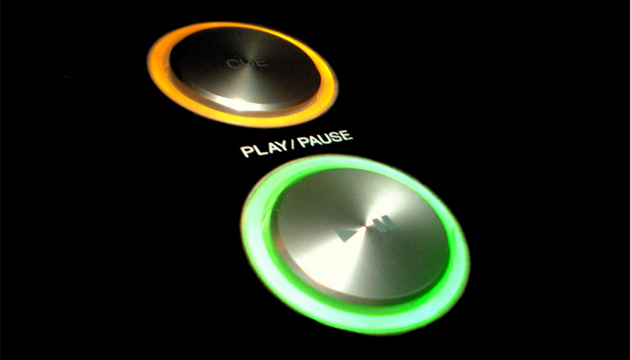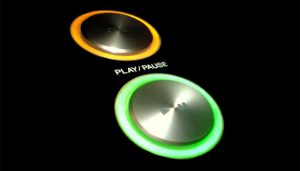 In recent months, the button pushing myth of making EDM came under fire, with Deadmau5 revealing many prominent festival performers essentially mime on stage. Yet, while the genre’s more well-known festivals are filled with DJs, authentically mixing or just pressing a laptop spacebar, electronic music has a long live tradition.
In recent months, the button pushing myth of making EDM came under fire, with Deadmau5 revealing many prominent festival performers essentially mime on stage. Yet, while the genre’s more well-known festivals are filled with DJs, authentically mixing or just pressing a laptop spacebar, electronic music has a long live tradition.
Still performing after a 30-plus year career, New Order, currently on tour, have been the paradigm of live electronic music. Regardless of the gear they use, New Order’s sound is contingent on two elements, of guitars and bass playing off keyboards, sequencers, and samples, with an undercurrent of drums, live or machine.
New Order’s approach, as well as that of Depeche Mode, Kraftwerk, the Pet Shop Boys, and other synthpop acts, formed the foundation for 1990s electronica. This group of performers, including The Chemical Brothers, The Prodigy, and Orbital, tend to rest more on electronic devices, occasionally even foraying into DJing. Orbital, with their 2004 Glastonbury performance, is considered the quintessential live electronica act.
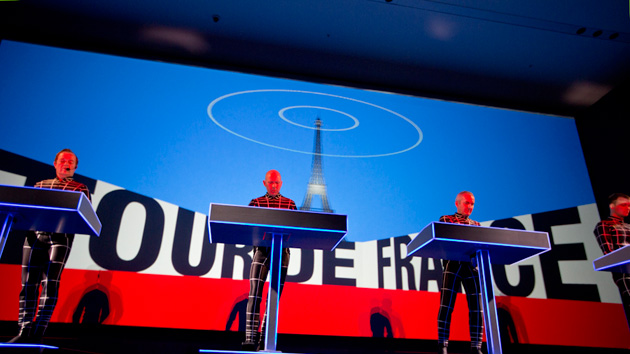
Adding to Orbital’s live credibility are their Woodstock ’94 performance (they were one of a handful of electronic acts on the bill) and 2004 Peel Sessions. Their sound, considerably more melody-focused, has been created through a combination of Ableton Live, vintage, and modern analog synths. iPads have creeped into their live, non-DJing sets as of recent. “I used to break down everything on MIDI loops on
Live and in the studio, The Crystal Method also turn to a wide variety of gear. Admitting to be influenced by New Order and Depeche Mode, the duo aim to create natural tones with synthetic instruments, resulting in a more ambiguous sound. To Guitar Center, Scott Kirkland explained, “The equipment that you see surrounding you now is the attempt to make synthetic music sound organic and make it sound like you don’t know where it came from. So, you can’t really peg it down as a drum machine, synthesizer and so on.”
But, even using Moog, E-Mu, Roland, and Korg synths, the Clavia Nord Lead has been their most consistent piece of live and studio gear. Added to this, in their live setup, is equipment for triggering samples. Nevertheless, Ken Jordan clarified in an M-Audio.com interview, “When we first started, we wanted to be taken seriously as a band and make sure we weren’t misrepresented as a DJ team. So of course for the first new album in five years we had to bring out some new gear, a new stage and put on a great show.”
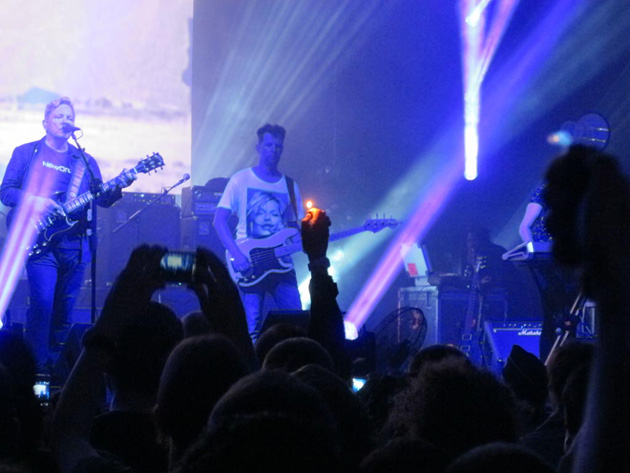
A synth-heavy setup characterizes The Prodigy’s performances. Live drums complement Liam Howlett’s setup of laptops, synths, and Ableton Live, the latter of which has “revolutionized” their performances. Daft Punk’s pyramid takes this to the next level and apparently needs 10 people to assemble. Gear, including Ableton, a Behringer MIDI, Minimoog Voyager, and Moog synth in 2008, are connected to visuals.
Merging older with newer gear is additionally an aspect of The Chemical Brothers’ live set. In 2011, the electronica group’s MIDI Tech Matt Cox spoke with Sound on Sound about the group’s live setup, which essentially merges DJing gear, like laptops with Ableton Live and Logic and a Mackie 32:8 mixer, with keyboards, synth modules, and drum machines. But, unlike the “press play” assumption, “If you went to five shows in a row, they’d all be different, sonically and musically,” Cox explained. “Apart from anything, there are often mistakes. One of them might go to dub a delay onto a synth, put it on the main kick drum by mistake and then go, ‘Hang on a minute, I quite like that!’ and play around with it for five minutes. And then the next night, they’ll do it again at the same point and just refine it a little bit. The show is an ever-changing thing.”
An improvisational quality created through live instruments and DJing gear is also the core of Underworld’s live performances. The group’s Karl Hyde spoke with Sound on Sound in 2000, explaining that their visuals, let alone the music, are not even pre-sequenced that the group is against tape playing. At the time, Underworld’s gear encompassed such divergent pieces as a guitar, vocoder, CDJ, and a synth. However, “Electronics are incredibly stubborn, and I wanted them to be predictable and unpredictable at the same time,” Hyde admitted. “It’s again a matter of balance. I wanted to be able to flow from one song to another at any point in the way a DJ can do with two record decks. And I wanted to be able to deconstruct the songs to the point where they aren’t even a certain song any more.”
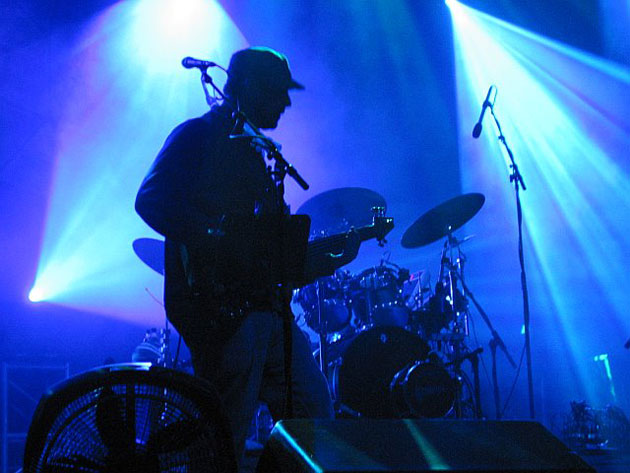
These elaborate arrangements, even in modern times, for ‘90s electronica acts were essentially stripped down by early ‘00s electro groups. Some, like Chromeo, strove to be retro. Much like New Order, the duo combines the guitars and bass with synths, Ableton Live, and an Akai MPC 500 for sound effects. A talk box enhances the retro quality. “When we decide to take a song to the live setup, we [try] to have as much vocals and talk box interaction as possible so we interact together, which is the most fun part of playing live,” P-Thugg told American Songwriter in an interview. “Then if the song doesn’t have enough talk box compatibility or potential, I replace as many synth parts and sounds from the records as I can physically play [to] complete Dave’s work, which is mostly playing guitar and singing. Whenever either of us has a second with nothing to do on stage, we keep busy with the percussions and MPC sound effects, or I get busy tuning my analog synths between songs. They can be very moody, especially when they just came off a flight and have jet lag.”
Other contemporaries, like TRST, stick with the synths and percussion, or like Basement Jaxx, Justice, and Groove Armada, effortlessly switch between DJing and live performing. As Groove Armada was touring for album Black Light in 2010, their backline tech Tim Hardstaff explained the group has gravitated toward a more live arrangement of Alesis HD24s, Logic, Korg synths, bass, and drums. A backing tape, however, is still incorporated, and if the act decides to change a track, this aspect is additionally altered.
Such combinations and methods set the stage for electronic acts as out-there as The Disco Biscuits. Fusing trance with jazz and jam band sounds, the group’s arrangement, of keyboards, a guitar, vocals, bass, and percussion, remains the same live and in the studio – essentially an oddity for electronic dance music.
Second Sun, far more traditionally electronic-based than The Disco Biscuits, admitted to Trance.nu to having minimal variation between their live and studio setups, as well. But, because of the far more complex nature of playing live, their studio work is far more experimental. “It’s taken us a lot of time and practice to do this without messing up, but now we can really focus on giving a great show instead of worrying about the gear not working,” they said.
Even DJs have live elements in their sets. For instance, when Kevin Saunderson spoke with Crossfadr earlier this year, he mentioned that his seminal techno act Inner City, recently regrouped, includes two singers, computers and programming, a drummer, and keyboards; arrangements, however, vary, and on a basic level, Saunderson may have the singers just accompanying his programming. Other DJs, like Tiesto and David Guetta, have had their vocal collaborators come on stage over the years, while Paul Van Dyk transitioned to a hybrid set: Not with vocals, but instead combining his two Macbook Pros, one for software and one for audio, mixer, and MIDI controllers, with synths and triggers.
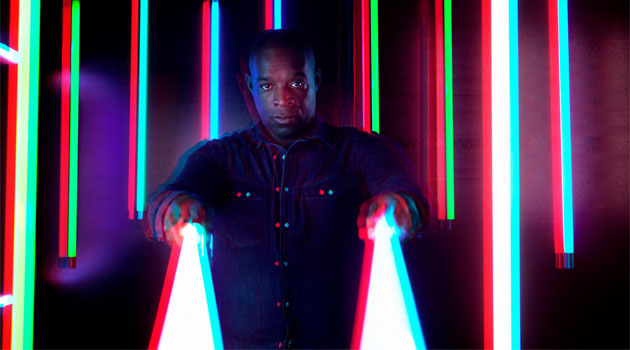
Newer artists, perhaps those raised on or exposed to rock, admit to the limitations of traditional DJing. That’s why Pretty Lights began including a drummer on stage while mixing live himself. “I guess getting really f–king bored watching DJ’s stand there on stage (laughs),” he told SFAppeal.com. “It’s like an open ended that all electronic musicians have to face. It’s like, okay, we wanna play shows, we want our music to be performed in a live setting, but what the f–k do we do onstage to make entertaining?”
The experimental nature of post-dubstep, we mentioned, is also deteriorating the assumption that live EDM must include a DJ. Although both a live performer and a DJ, James Blake, one of the sub-subgenre’s forerunners, leans more in the songwriter direction, equally comfortable behind a keyboard as he is behind standard gear. Mount Kimbie, as well, effectively merge rock and dubstep, mixing loops, samples, a MIDI keyboard, and a Korg Kaoss Pad with live guitar, snare, and cymbal, in a way Skrillex was never able to do alone behind a booth.
